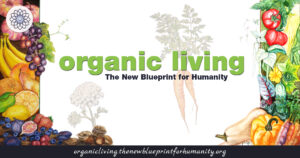Creating An Instant Garden
The following process is called an instant garden and it was made popular by Bill Mollison, the person who coined the phrase Permaculture. In short, forests have the largest productions of any growing systems in the world. They also have the widest diversity of life, both above and below the surface of the soil.
On the edges of forests, many plants that humans have been cultivated were originally found. The process below mimics the ‘forest edge’ to help plants thrive. This can be done on top of a lawn, an existing garden, a sidewalk/driveway, even on top of a table.
The process is simple to perform as long as you have acquired the necessary inputs.
You will need:
- a lot of straw/dry grass/dry leaves/spent hay. This is to mimic forest ‘duff’. When you walk in a forest, there is a thick layer of dead leaves and twigs.
- lots of cardboard, paper, newspaper, etc
- kitchen scraps or young compost
- a little aged compost/nice topsoil
- some seeds and/or young plants
- optional (aged anima
- l manure, from organically fed animals, preferably from animals you feed yourself)
You want to pick a location with at least 6 hours of sun with access to water.
You begin by laying out a region (rectangle, key-hole, semi-circle, etc). The first layer is the kitchen scraps and optional mature manure. Next is the cardboard/paper layer.
Overlap to prevent weeds from poking through any openings. Next, wet the cardboard/paper if possible (speeds up the process). Next is a thick layer of hay/dry grass/straw/dry leaves. This needs to be a minimum of 3 to 4 inches. This will quickly compact as it decomposes. Error on the side of way too much than too little. Next plant your seeds/seedlings.
If you are planting seedlings, you make a hole in the straw bed all the way down to the cardboard layer, and poke many holes in the cardboard layer with a screw driver, stick or knife (careful please). Next, add some compost and topsoil into the hole and carefully plant the seedling in the hole and water each. Potatoes can be done the same way. The difference is the seed potato is put at the bottom of the hole and the soil/compost is added to the top. As the potato grows, make sure there is enough hay/straw to cover the potatoes. Sun will cause the potatoe to green which makes them unedible (green potatoes can be re-used as seed potatoes in the next year).
For starting seeds, you repeat the process and then lightly sprinkle a few seeds on the top of the soil/compost. You add a small amount of topsoil to cover the seeds (the smaller the seed, the less soil added to the top of the seed). Lightly water the seeds.
The process is very fast. In most cases, you can build a 3 foot by 12 foot bed in under 30 minutes. Then you can repeat the process as often as you want to make more.
Notes:
- a) if you have a severely compacted clay soil, you should open the soil with a fork (poking holes) to help with drainage first. A better idea is to make the bed in the fall (skipping the topsoil/compost part). Then in the spring, you add another layer of straw before planting.
- b) if you are not able to get compost, the top inch of soil in a local forest is a very good substitute. The exception is cedar and coniferous (pine, spruce, fir) forests. Those trees terraform the soil for their own species and are not good for growing vegetables.
- c) if you want to make your own compost, it can be done in about 3 to 4 weeks using the ‘hot compost’ method. Be prepared to fail once or twice when making hot compost, as the process is more like an art than science.
- d) you need to take into consideration the plants and the location you are growing. Some plants are cool weather crops and some are warm. Peas, radishes, lettuce, most brassicas are cool weather and need a cool shady place to grow. Warm weather are melons and their relatives. Some plants mature quickly (50 to 60 days) and some need 120 or more days to mature.
Ruth Stout Method
Here is another type of instant garden, known affectionately as the Ruth Stout method.
There are two steps.
- In the fall, place a thick (8 to 12 inch) layer of spoiled/old hay on the garden plots/beds
- In the spring, pull back the hay and plant seeds on the soil. For tubers, like
potatoes, just place on top. For seeds, make a small depression with your finger
or stick and drop in the seed. For bulbs (onions, garlic), use a broom handle to
make a hole and put in the bulb. Cover lightly with some soil. Pull the hay back
on top and optionally water.
Wait. If all goes well, the plants will thrive. Repeating the process, year after year increases the fertility of the beds







